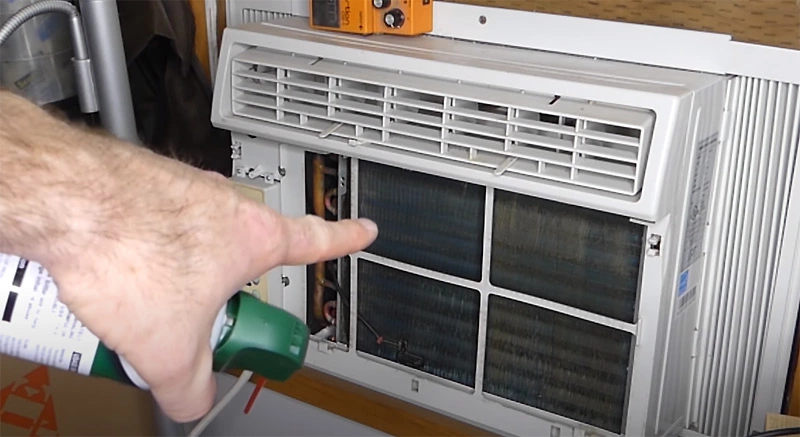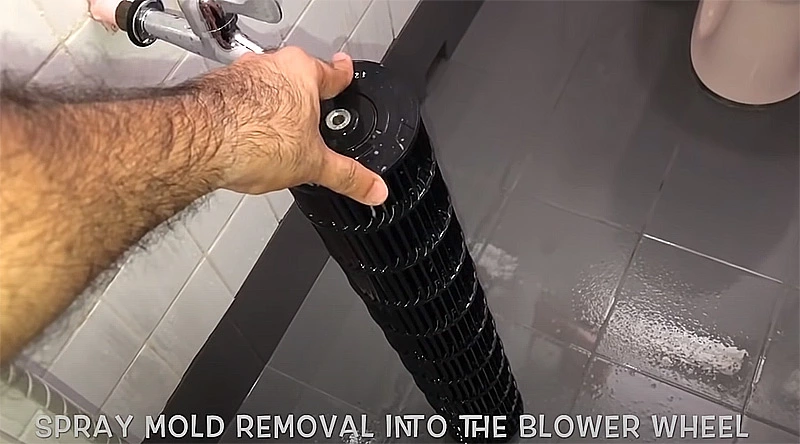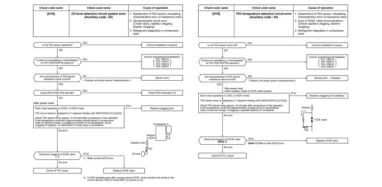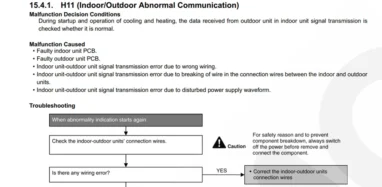What cause mold in AC unit?
Mold in air conditioner units generally needs two things to grow, one is moisture, and another one is organic food content. Condenser and evaporator coils are mainly responsible for this process. Due to evaporation, the mold gets moisture, and organic food content can be anything. It can be like dust, dirt, pollen, wood, etc., which may have collected inside the air conditioner duct for a long time and helps in growing the mold.
Mold in air conditioner symptoms

If a mold is growing in your air conditioner unit, it releases spores. This spore can easily be inhaled and may cause irritation or allergic problems. Molds may cause irritation in the eyes, throat, cough, and sometimes irritation in skin even. So it becomes very necessary and important to identify the symptoms of the mold. And to take necessary precautionary measures so that an individual’s health may not get affected.
Here are some of the symptoms of mold in the air conditioner unit:
- When a mold grows in an air conditioner duct, it creates a strong, musty smell throughout the house or in the room where the air conditioner is installed.
- Irritation in your nose, throat, eyes, and sometimes even in your skin when you switch on the air conditioner. Or, when you enter an air-conditioned room may also be one of the symptoms of mold in the air conditioner unit.
- Some people also get allergic symptoms like running nose, watery eyes, and even rashes on their skin over the whole body. It happens when switching on the air conditioner or entering into the air-conditioned room if there is a mold in the air conditioner duct.
- Many people may get fatigued or even dizzy if there is mold in the air conditioner unit.
- The mold can clearly be seen growing in the air conditioner vents and around the air conditioner ducts.
Therefore, whenever you see all these symptoms, and you live in a warm climate, which provokes the growth of mold in an air conditioner unit. You should immediately call for professional help before you get more health problems.
How to remove mold from air conditioner dusts

As discussed earlier, mold can be harmful to your health. It may lead to different allergies or irritation in the eye, skin, throat, or nose. It may also lead to dizziness. Hence it becomes very important and necessary to remove the mold from the air conditioner duct.
After knowing the symptoms of the mold, you are sure about the mold in the air conditioner duct. Now comes the time to deal with it. Here are a few suggestions to deal with the mold in your air conditioner duct.
Inspect your air conditioner unit
After knowing about the mold present in your air conditioner duct, the first step is to inspect the air conditioner unit. It is to know the extent of your problem. So first of all, unplug the air conditioner unit and remove the front cover of your air conditioner. Now using a flashlight, inspects the inside area of the unit, which shows the presence of the mold. There may be a strong, musty smell and a cluster of black or green stains or powdery white stains. Now when you find the traces of mold inside the conditioner unit, start cleaning the surfaces. And, if it’s a huge amount of mold, which may affect the working of the air conditioner, replace the whole unit.
Clean the mold in the air conditioner unit
Now, if a small amount of mold is present in the air conditioner unit, it needs to be cleaned. You always get a manual with your air conditioner. Open your manual and know how to access the interior part by opening the exterior part. All the tools needed are written in the manual. Collect them all and then follow the steps written in the manual. There is also written how to clean the air conditioner if such a case occurs. Follow all the steps and clean the air conditioner’s internal unit properly. Now after cleaning, allow it to dry completely, which will take around 24 hours, and then reassemble and reinstall your unit into your window.
Replace the unit if heavy mold is present
If after your inspection you find heavy mold present in your air conditioner unit, do not even try to clean it. It may be harmful to your health. This mold indicates that there is a lot more mold inside the unit where your hands cannot go. You should immediately call for professional help and see if the unit can be cleaned or not. If it is possible to clean it, go for it. But a more specific recommendation to deal with such heavy mold is replacing the unit because the heavy mold is very harmful to your health. Cleaning it yourself or even the professional may cause health issues. And, secondary mold leaves behind spores, so even after cleaning, breathing the air with the mold spores could be harmful. Moreover, it also the cost of recommendation to professional help may be the same as replacing the whole unit, so go for it.
Take precautionary measures to prevent further mold growth
Despite a lot of cleaning efforts done, there are a lot of chances of developing the mold again if it has already occurred once. This is because there may be places inside the air conditioner unit where you could not reach and which may contain mold spores. Dirt and dust may again attempt for growth of a heavy mold. So it is recommended to properly clean up the internal unit weekly and avoid dirt and dust settling in the unit.
Also, this is seen commonly in people that whenever they go for a vacation, they shut off the air conditioner, and it is not in use for those days. It is recommended not to do this, especially during warm weather. Because mold generally needs a warm climate to grow, and when the air conditioner is in regular use, the air flow prevents the growth of the mold. For this, you can keep your air conditioner to a higher temperature than a normal temperature whenever you have to go somewhere. This way, you will save your cooling cost, and air will occasionally flow through your air conditioner unit. And, it also prevents the growth of the mold inside it.
How to remove mold from air conditioner vents
- Turn off your air conditioner and thermostat
- Wear a mask to protect yourselves from fungi inside the air conditioner dusts
- Take the air conditioner vents out and clean it
- Let the air conditioner vents dry and re-install them


